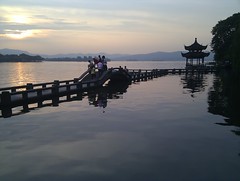Some quotes and context around technology and art teaching, and the history in Leeds.
An understanding of contemporary media and the means of production, informed by a sense of digital technology, aesthetics and ethics.
Process & materials. Mechanisms of communication.
“In a field that moves so quickly – where today’s innovations may be obsolete tomorrow – students need more than just technical skills. They need an understanding of the underlying structures that fuel the dynamism between technology and creativity.â€
Sara Diamond, Artistic Director Media and Visual Arts, Director of Research, The Banff New Media Institute
“… if technology and the ability to be connected disappear further into the background, what will occupy our foreground? A bit of the humanity we’ve always valued in the “real world.” Legislators who are currently fixated on STEM (Science, Technology, Engineering and Math) education as the key to innovation will realize that STEM needs some STEAM–some art in the equation. We’ll witness a return to the integrity of craft, the humanity of authorship, and the rebalancing of our virtual and physical spaces. We’ll see a 21st-century renaissance in arts- and design-centered approaches to making things, where you–the individual–will take center stage in culture and commerce.â€
Your Life in 2020, John Maeda (2010)

“Innovation is born when art meets science.â€
John Maeda, President, RISD

Leeds City Mechanics’ Institute
- 1824 – Leeds Mechanics Institute founded.
- 1845 – Leeds College of Commerce founded.
- 1846 – Leeds College of Art founded.
- 1868 – Leeds Mechanics Institute became the Leeds Institute of Science, Art and Literature, later renamed Leeds College of Technology
- 1874 – Yorkshire College of Education and Home Economics founded.
- 1907 – City of Leeds College of Education founded (part of City of Leeds Training College)
- 1933 – Carnegie Physical Training College founded
- 1970 – Leeds Polytechnic was formed from the amalgamation of Leeds College of Technology, Leeds College of Commerce, part of Leeds College of Art and Yorkshire College of Education and Home Economics
George Birkbeck (1776-1841), held a degree in medicine. When he started his lectures in 1799 he found it necessary to have a good deal of apparatus, and while this was being made under his instructions he became acquainted with a number of Glasgow artisans. He found them so intelligent and so eager to learn that he resolved to start a course of lectures and experiments in mechanics ‘solely for persons engaged in the practical exercise of the mechanical arts, men whose situation in early life has precluded the possibility of acquiring even the smallest portion of scientific knowledge.’ The lectures proved a great success. After Birkbeck removed to London in 1804, the lectures were continued by the next occupant of the chair; and finally, in 1823, the members of the class organised it into a ‘Mechanics’ Institute’. Its purpose was defined as ‘instructing artisans in the scientific principles of arts and manufactures’.
http://www.uefap.com/reading/exercise/ess2/barnard.htm
Artisan: “A skilled manual worker who uses tools and machinery in a particular craft. A person who displays great dexterity.â€
- open, free, course of lectures on the ‘mechanical arts’
- mix of classes, library, reading-room, and apparatus for experiments
- lectures on mathematics and its applications, and on natural and experimental science and drawing
- “threw into relief the connection between material advancement and the necessity of education to take part in its advantages”
- funded by benevolent groups and individuals, businesses and small rental fee
- provided free light on two evenings a week from the local Gas Light Company
http://www.infed.org/walking/wa-birb.htm
http://en.wikipedia.org/wiki/Mechanics_institute
[in] 1955 [Harry Thubron] became Head of Fine Art at Leeds College of Art. During his ten year tenure in Leeds he helped to revolutionise art education in England by establishing the Basic Design Course, a programme inspired by the German Bauhaus college and the theoretical writings of Herbert Read. In this programme, art and design students were not taught specific skills for any of the disciplines of art and design, but visual literacy in the use of colour, establishment of form and construction of space. Out of this, and similar experiments undertaken by Victor Pasmore and Richard Hamilton at Kings College Newcastle, a new introductory course for art, design and architecture students emerged, called the Foundation Course, which went on to became the standard degree course-entry qualification for art, design and architecture students … He also helped to create a prototype for Britain’s Polytechnics by sending his students to work on collaborative projects with engineering students from Leeds College of Technology, out of which Leeds Polytechnic was formed.
http://en.wikipedia.org/wiki/Harry_Thubron

Out-take from Christopher Burstall’s BBC documentary A Question of Feeling 1970. Day one with students on the reconstructed The Locked Room project. © Garth Evans









